Zwerius
Well-known member
Almost five years now, I am the owner of an i3 REX.
I nearly always charge at home and to do that, I'm using the portable charger as supplied with the car.
Of course the dealer tells me, I should use a wall charger unit, but I don't see any reason for that.
The lower charging speed of the portable charger is fine for me and never gave me any problem with the way I'm using the car.
And using the standard supplied portable charger, should even be better for the battery lifetime because of the lower charging current!!
Anyhow, in our "energy plus house" (even including 2 electric cars and a heatpump for heating our nett usage is zero over a year) I'm always looking for ways to save a few kWh's. For those of you interested, look here (it's in Dutch, but Google translate can help): https://geen-energierekening-meer.weebly.com/
And I noticed that the 230V cable of the OEM charger was a little warm during charging. I also noticed that this cable was actually quite small in diametre compared to the same 230 V cable from my wifes Volkswagen E-Up charger. So I compared the two chargers and the cable diametres.
I shot this picture. In the top of the picture you see both 230V cables and at the bottom the charging cables that will go from the charger to the car. The right charger is from the i3 and the left one is from the VW E-Up. Draw your own conclusions...
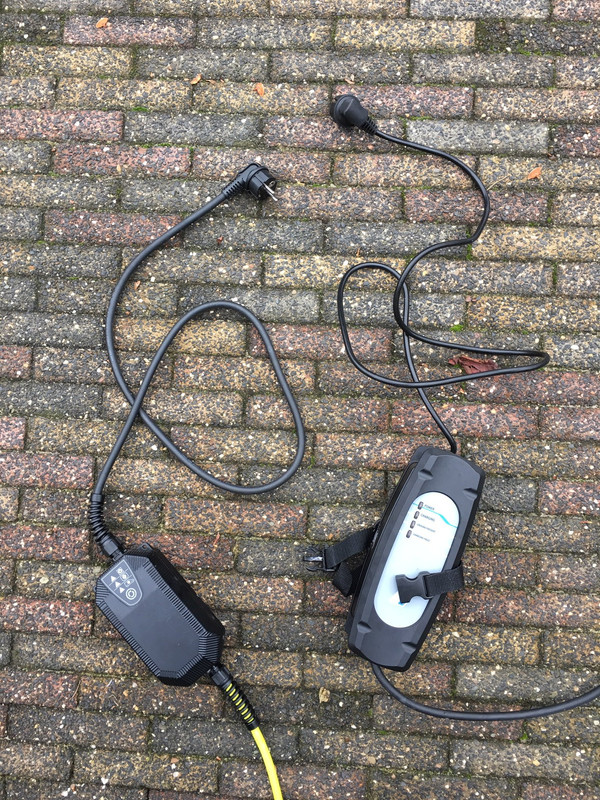
So by knowing the 230 V cable to the charger was quite small (in cross section area for the conductors as well of course, I measured 1,5 mm2), I thought I'd take an infrared picture of the cable (inside the outdoor-cabinet were the charger is located):
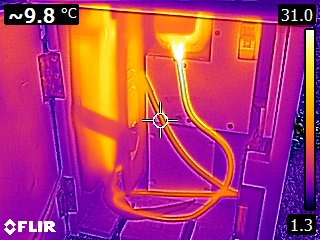
And as I expected, the cable was warm, but the connection from the cable to the plug was even warmer.
A closer inspection of the temperature of the plug showed a temperature of 54°C (129F):
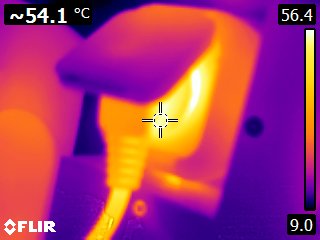 image uploader
image uploader
Well mostly this is a bad connection between plug and socket, but after a closer inspection it looked like it was not this connection, but the connection between the cable (with small cross section) and the plug pins.
The resistance I measured over the 230 V line was about 2*0.2=0.4 Ohm. This is a loss of 23 Watts (at 10.8 Amps of measured cherging current in the 230V line). The calculated loss over 2 x 1.7 metres of 1.5 mm2 cable is only 2*0.02=0.04 Ohm
Following photos shows what the plug was looking like:
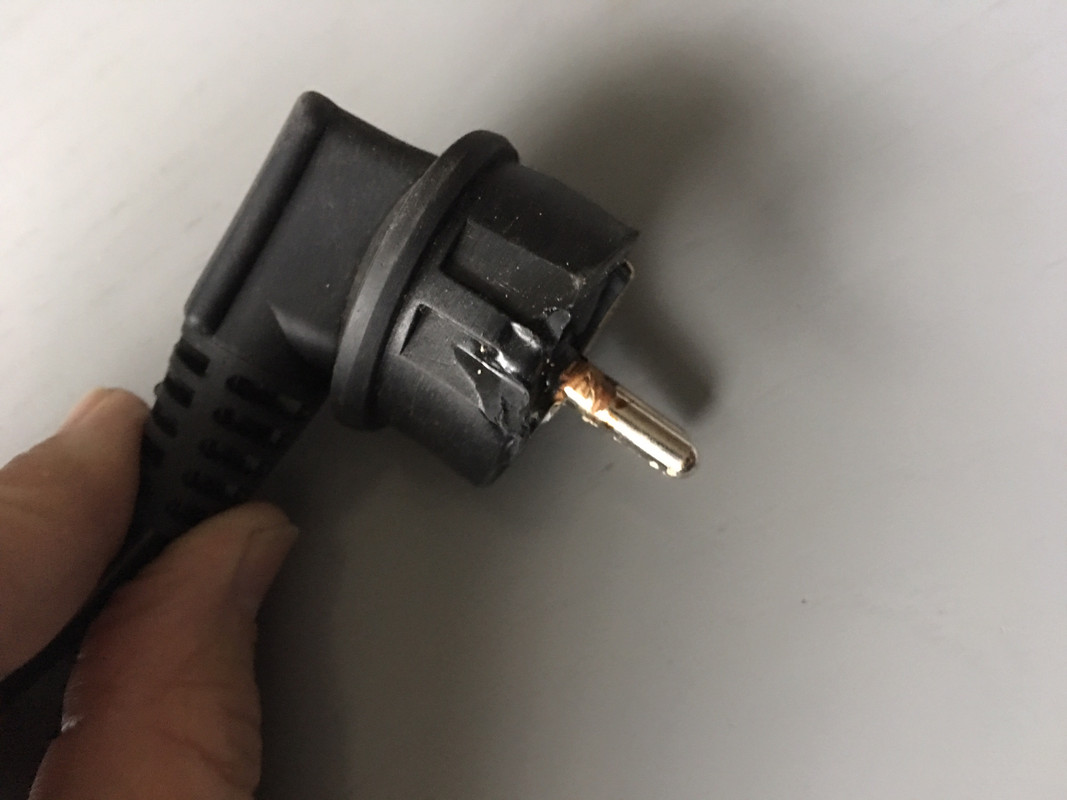
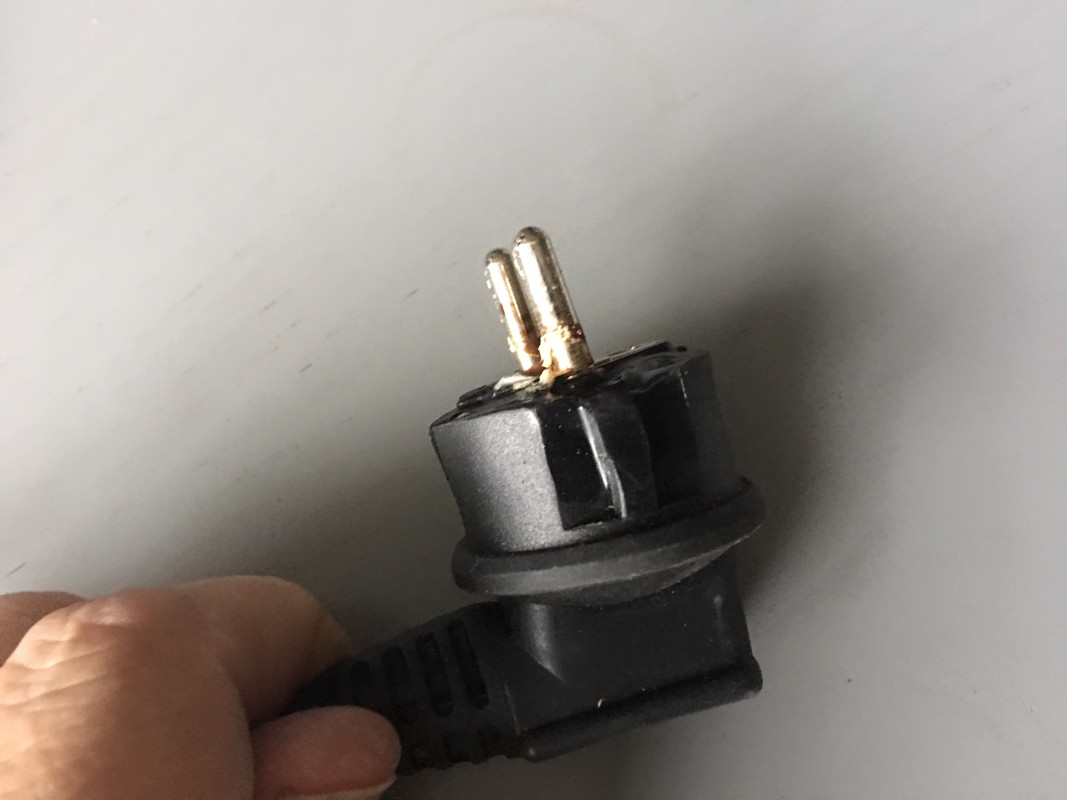
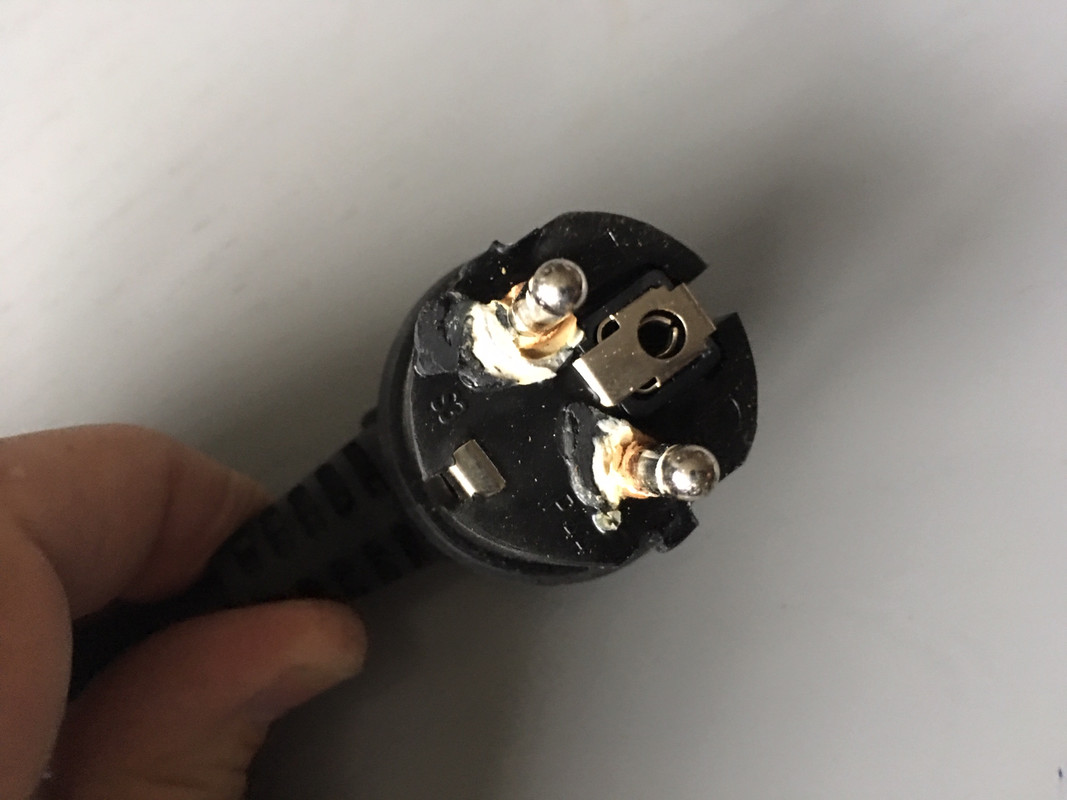
Of course I replaced the 230 V cable and plug. This time with decent 2,5 mm2 cross section cable and a plug with 2,5 mm2 connections.
This is the result. Just to be sure, I also replaced the wall socket.
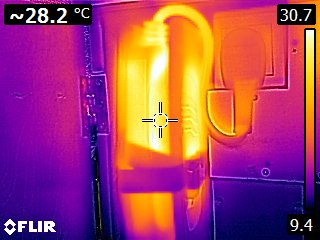
No more hotspots in plug or cable. Of course the cable is a little heated up from the side of the chargebox.
I nearly always charge at home and to do that, I'm using the portable charger as supplied with the car.
Of course the dealer tells me, I should use a wall charger unit, but I don't see any reason for that.
The lower charging speed of the portable charger is fine for me and never gave me any problem with the way I'm using the car.
And using the standard supplied portable charger, should even be better for the battery lifetime because of the lower charging current!!
Anyhow, in our "energy plus house" (even including 2 electric cars and a heatpump for heating our nett usage is zero over a year) I'm always looking for ways to save a few kWh's. For those of you interested, look here (it's in Dutch, but Google translate can help): https://geen-energierekening-meer.weebly.com/
And I noticed that the 230V cable of the OEM charger was a little warm during charging. I also noticed that this cable was actually quite small in diametre compared to the same 230 V cable from my wifes Volkswagen E-Up charger. So I compared the two chargers and the cable diametres.
I shot this picture. In the top of the picture you see both 230V cables and at the bottom the charging cables that will go from the charger to the car. The right charger is from the i3 and the left one is from the VW E-Up. Draw your own conclusions...

So by knowing the 230 V cable to the charger was quite small (in cross section area for the conductors as well of course, I measured 1,5 mm2), I thought I'd take an infrared picture of the cable (inside the outdoor-cabinet were the charger is located):

And as I expected, the cable was warm, but the connection from the cable to the plug was even warmer.
A closer inspection of the temperature of the plug showed a temperature of 54°C (129F):
 image uploader
image uploaderWell mostly this is a bad connection between plug and socket, but after a closer inspection it looked like it was not this connection, but the connection between the cable (with small cross section) and the plug pins.
The resistance I measured over the 230 V line was about 2*0.2=0.4 Ohm. This is a loss of 23 Watts (at 10.8 Amps of measured cherging current in the 230V line). The calculated loss over 2 x 1.7 metres of 1.5 mm2 cable is only 2*0.02=0.04 Ohm
Following photos shows what the plug was looking like:



Of course I replaced the 230 V cable and plug. This time with decent 2,5 mm2 cross section cable and a plug with 2,5 mm2 connections.
This is the result. Just to be sure, I also replaced the wall socket.

No more hotspots in plug or cable. Of course the cable is a little heated up from the side of the chargebox.
